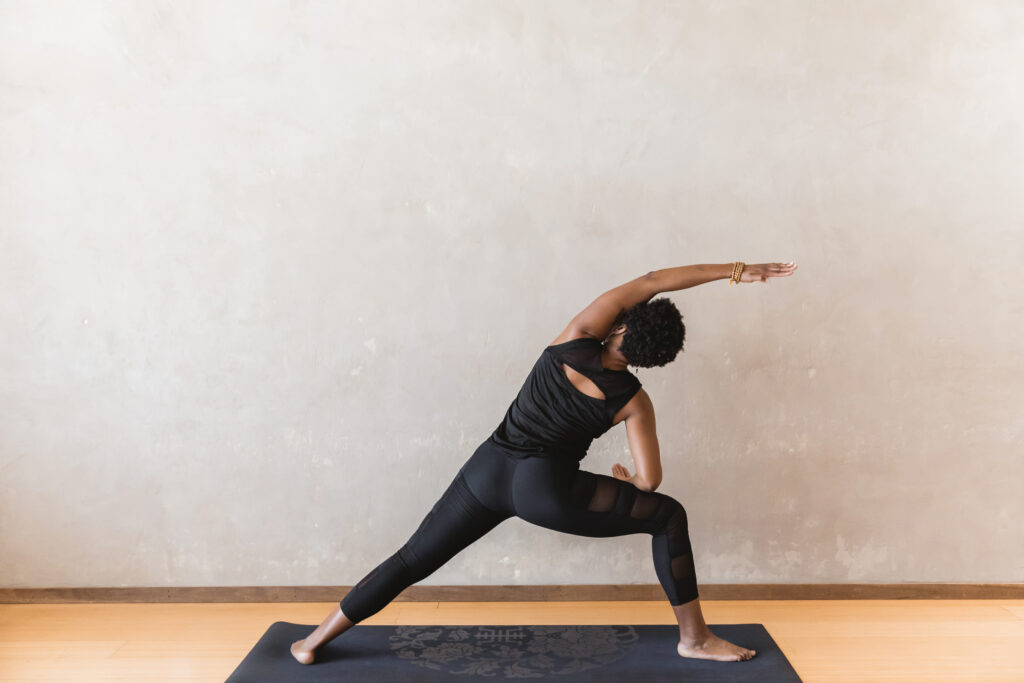
Let’s talk about self-care—the kind that goes beyond bubble baths and candles (though those are lovely). When life gets busy, it’s easy to let caring for your body fall to the bottom of the list. But making time for your well-being, especially through practices like massage and stretching, isn’t a luxury; it’s essential.
Our bodies carry so much of the stress we face every day. That tension builds up, affecting us physically and emotionally. Stretching and massage can release that stress, support recovery, and give us the reset we often don’t realize we need.
Self-care doesn’t have to be complicated. It’s about carving out moments to support your body in ways that feel good for you—whether it’s a massage, a stretching session, or simply giving yourself permission to slow down. When we care for our bodies, we’re also caring for our minds, allowing us to show up stronger for everything else in our lives.
My Pilates Journey: Strengthening the “Small but Mighty”
About eight years ago, I fell in love with Pilates and decided to dive deeper by training to become an instructor. While I did complete the certification course, I never took the exam, something I sometimes regret. But the experience taught me so much about my body, movement, and fascia.
Pilates focuses on strengthening the small, often overlooked muscles, specifically the stabilizers that create balance and posture. It’s so different from traditional gym workouts, which mostly target the big muscles like quads and biceps. What I learned was transformative: when you focus on those smaller muscles, you build strength from the inside out, supporting your entire body, including your fascia.
Fascia: What It Is and Why It Matters
Fascia is the connective tissue that wraps around your muscles, bones, and organs. It’s what holds us together, supports movement, and according to research, even stores emotional tension. That tightness in your shoulders after a tough week or stiffness in your hips may not just be from sitting too long, it could be unprocessed emotional stress sitting in your fascia.
My journey to developing a deeper mind-body connection began as a lifelong soccer player. Sprinting, strengthening, and pushing through banged-up, achy muscles were just part of the routine, a sign of a game well-played. But over time, I realized I had grown accustomed to being dehydrated and stiff, assuming that was just the norm. It wasn’t until I began approaching strengthening with more mindfulness and understanding the connection between fascia and stored stress that my perspective shifted.
As I started to truly listen to my body, I gained a newfound appreciation for everything I was putting it through and the attention it deserved in return. Using rollers, balls or yoga blocks, I discovered how tension can be held in the body. It’s not uncommon for me to feel an overwhelming wave of emotion when stretching. I’ve even found myself burying tears in my towel during yoga class, embarrassing in the moment, but ultimately liberating. This journey has taught me that true strength comes from caring for my body and mind as much as I push it.
And for me, massage isn’t just about relaxation. Techniques like myofascial release (a form of massage) work to “unstick” the fascia, allowing for better movement and it also helps to process those stored emotions. It’s a powerful reminder of how deeply connected the mind and body are.
What We Get Wrong About Exercise
For years, I thought working out meant pushing myself to the max, with activities like heavy lifting and high-intensity cardio. But here’s the catch: research shows that for women, especially as we age, intense exercise can spike cortisol, our stress hormone. While cortisol is useful in small doses, chronic elevation can negatively impact our physical and emotional well-being.
Instead of chasing tough workouts, I’ve shifted to movement that strengthens with less stress, and focusing more on Pilates, stretching, and walking. The result? My body feels better, and my mind is calmer.
Hydration: Drink Plenty of Water
One of the biggest lessons I’ve learned is the importance of hydration. Fascia needs water to stay pliable and healthy. When it’s dehydrated, it becomes sticky and stiff, leading to aches and pains. If you’ve ever felt tightness in your body that just won’t go away, it might be time to drink more water.
Hydration isn’t just a wellness cliché, it’s essential for keeping your fascia (and the rest of you) in great shape.

What You Can Do To Improve Your Fascia Self-Care
If there’s one thing I hope you take away, it’s this: self-care is about listening to your body and giving it what it needs to thrive. Here are a few ways to start:
- Get regular massages. They’re more than a treat—they help release tension and support your fascia.
- Incorporate stretching. Whether it’s yoga, Pilates, or simple stretches, keeping your fascia flexible is key.
- Drink more water. Start with an extra glass or two each day—it’s a simple step with big benefits.
- Reconsider high-intensity workouts. Opt for movement that strengthens without spiking stress hormones.
A Little Reminder
Taking care of yourself isn’t selfish; it’s essential. Whether through Pilates, massage, or simply drinking more water, small acts of care ripple out into every part of your life. They support your physical health, your emotional well-being, and your ability to show up for the people and things that matter most.
You’re doing so much, and it’s okay to take a moment for yourself. Your body and your mind will thank you for it.
